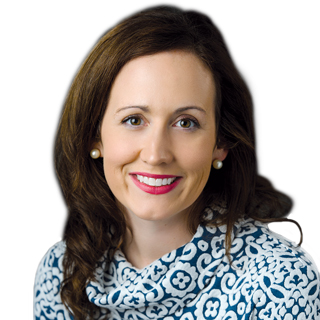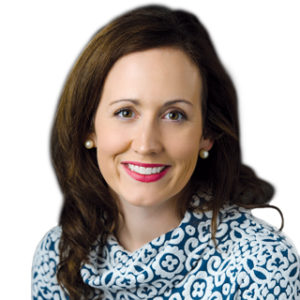

Conversion factor, telehealth, supervision requirements and health equity were all outlined in this week’s publication of the Centers for Medicare & Medicaid Services’ CY 2022 Physician Fee Schedule Proposed Rule.
These areas have been reviewed and summarized with ease over the past couple of days in publications across the industry.
All the areas, that is, with the exception of de minimis.
We reach page 275 of 1757 of the proposed rule and we begin to dissect the multitiered and relatively complex process of understanding de minimis.
All I can say is thank goodness for our electronic medical record (EMR) companies. For those of you who remember logging time on paper service logs back in the day, imagine manual calculations for de minimis? They would have been nothing short of a nightmare.
Want to learn more?
Well, here we go.
First, we must understand the history and regulatory background.
The Centers for Medicare & Medicaid Services states they are implementing the third and final part of the amendments made by section 53107 of the Bipartisan Budget Act (BBA of 2018) (Pub. L. 115-123, February 9, 2018).
The BBA of 2018 added a new section 1834(v) of the Act. Section 1834(v)(1) of the Act requires CMS to make a reduced payment for physical therapy and occupational therapy services furnished in whole or in part by physical therapist assistants (PTAs) and occupational therapy assistants (OTAs) at 85% of the otherwise applicable Part B payment for the service, effective January 1, 2022.
This reduction is applicable when more than 10% of the service for timed codes is provided by the physical therapy assistant or occupational therapy assistant. Furthermore, the reduction will be applied only to the 80% Medicare allowable portion and not applied to the 20% patient co-payment. Based on the reduction calculation (.20+(0.80*0.85), the reduction would equal 88% overall.
Secondly, we must understand how CMS is deciding whether the 10% de minimis standard is exceeded.
They offered two different ways to compute this:
- The simple method: Divide the total of the PTA/OTA + PT/OT minutes by 10, round to the nearest integer then add one minute to get the number of minutes needed to exceed the de minimis standard at and above which the CQ/CO modifier applies.
- The percentage method: Divide the PTA/OTA minutes by the sum of the PTA/ OTA and therapist minutes and then multiply this number by 100 to calculate the percentage of the service that involves the PTA/OTA, if this number is greater than 10% the CQ/CO modifier applies.
Finally, they summarize the standard stating a de minimis standard to identify when the CQ/CO modifiers apply and when they do not apply as follows:
● Portions of a service furnished by the PTA/OTA independent of the physical therapist/ occupational therapist, as applicable, that do not exceed 10% of the total service (or 15-minute unit of a service) are not considered to be furnished in whole or in part by a PTA/OTA, so are not subject to the payment reduction;
● Portions of a service that exceed 10% of the total service (or 15-minute unit of a service) when furnished by the PTA/OTA independent of the therapist must be reported with the CQ/CO modifier, alongside the corresponding GP/GO therapy modifier; are considered to be furnished in whole or in part by a PTA/OTA, and are subject to the payment reduction; and
● Portions of a service provided by the PTA/OTA together with the physical therapist/occupational therapist are considered for this purpose to be services provided by the therapist.
Confused?
Perhaps some case studies will help.
Example #1 PTA – 23 minutes 97110 PT – 13 minutes 97110 PT – 30 minutes 97140 Total = 66 minutes – qualifies for billing four units (53 minutes through 67 minutes).
Billing Explanation:
● First Step: Assign units to services based on those that have at least 15 minutes or codes that were provided in multiples of 15 minutes. For 97110, assign one unit of 97110 with the CQ modifier because the PTA furnished at least 15 minutes of 97110 (therapeutic exercise). Then, assign two units of 97140 without the modifier, because the PT furnished the full 30 minutes of manual therapy.
● Second Step: Determine if the PTA furnished more than 10% of the remaining minutes of the 97110 service. To do this via the simple method: add the PTA’s eight remaining minutes to the PT’s 13 minutes for a total time of 21 minutes. Divide the total by 10 to get 2.1 minutes and round to the nearest integer, which is two minutes (the 10% time standard for this service). Add one minute to find the threshold number of minutes that would exceed the de minimis standard, which in this example is three minutes. Using the percentage method, divide the PTA’s remaining eight minutes by the total 21 minutes of the service (8 PTA + 13 PT = 21 minutes) to get 0.38, then multiply the result X 100 = 38%.
● Final Step: Because eight minutes meets or exceeds the three-minute threshold, and 38% is greater than 10%, a second unit of 97110 is billed with the CQ modifier.
Example #2 PTA – 19 minutes of 97110 PT – 10 minutes of 97110 Total = 29 minutes – two units of 97110 can be billed (23 minutes through 37 minutes).
Billing Explanation:
● First Step: Bill one unit of 97110 with the CQ modifier because a full 15 minutes was provided by the PTA, with four minutes remaining.
● Second Step: Determine if the PTA’s four remaining minutes exceed the 10% de minimis standard. Simple method: Add together the PTA’s four remaining minutes and the 10 PT minutes to get the total time of 14 minutes and divide by 10 to get 1.4 minutes and round to the nearest integer = one minute to get the 10% de minimis standard. Then add one minute to get a threshold minimum of two minutes for PTA time. If the PTA minutes are at or above the threshold, the CQ modifier applies. Percentage method: Divide the PTA’s four remaining minutes by the total time of 14 to get 0.29 then multiply by 100 = 29%. If the resulting percentage is greater than 10%, the PTA modifier applies.
● Final Step: Bill another unit of 97110 with the CQ modifier since four minutes is greater than the two-minute threshold minimum and 29% is greater than 10%.
In closing, as with all proposed rules, do not forget the comment period. Comments are due to CMS by 5:00 pm EST on Sept. 13, 2021. Comments, including mass comment submissions, must be submitted in one of the following three ways (please choose only one of the ways listed):
1. Electronically. You may submit electronic comments on this regulation to http://www.regulations.gov. Follow the “Submit a comment” instructions.
2. By regular mail. You may mail written comments to the following address ONLY: Centers for Medicare & Medicaid Services, Department of Health and Human Services, Attention: CMS-1751-P, P.O. Box 8016, Baltimore, MD 21244-8016.
3. By express or overnight mail. You may send written comments to the following address ONLY: Centers for Medicare & Medicaid Services, Department of Health and Human Services, Attention: CMS-1751-P, Mail Stop C4-26-05, 7500 Security Boulevard, Baltimore, MD 21244-1850.
Renee Kinder, MS, CCC-SLP, RAC-CT, is Executive Vice President of Clinical Services for Broad River Rehab and a 2019 APEX Award of Excellence winner in the Writing–Regular Departments & Columns category. Additionally, she serves as Gerontology Professional Development Manager for the American Speech Language Hearing Association’s (ASHA) gerontology special interest group, is a member of the University of Kentucky College of Medicine community faculty and is an advisor to the American Medical Association’s Relative Value Update Committee (RUC) Health Care Professionals Advisory Committee (HCPAC).
The opinions expressed in McKnight’s Long-Term Care News guest submissions are the author’s and are not necessarily those of McKnight’s Long-Term Care News or its editors.





